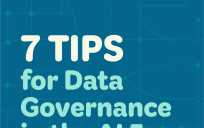Digital transformation is changing how the federal government works and engages with citizens. Processes that used to require a person to physically get up from her desk, walk down the hall, log onto a separate system or open a file cabinet and manually search for a required piece of information have been automated — to a certain degree.
However, a huge automation gap still exists between federal agencies and the private sector — largely because of the slow adoption of robotic process automation (RPA) in the federal space. Today, bots are being used on a limited basis to automate repetitive and menial tasks, pull information from legacy mainframe systems that would otherwise require a human, reduce request backloads, and allow public servants to focus on more strategic work. When implemented properly, RPA can do much more to improve operational efficiency, enhance the citizen experience and increase staff engagement.
However, RPA has been adopted cautiously in the federal space because bots need a lot of hand-holding in the form of configuration and context. These are single purpose machines that need to be told what to do. Sure, artificial intelligence (AI) and machine learning (ML) can help, but connecting RPA with AI/ML, application programming interfaces and other integrations requires a lot of development resources — something that’s in short supply for federal agencies.
RPA at Scale for Federal Agencies
Low-code development platforms can help federal agencies implement RPA at scale by making it easy to connect bots with government systems, workflows, decision rules, AI/ML and case management. Low-code lets agencies do this efficiently with little or no coding experience, while also lowering operational costs. Here are three simple RPA use cases that federal agencies can implement today using low-code development platforms:
- Reference checks: Nearly every citizen request needs at least one or two reference checks. A civil servant approving a loan may need to confirm the applicant is in good standing with the IRS. And someone granting emergency aid may need to ensure the recipient’s permanent address is in the designated disaster zone. These reference checks take time and require digging up information in disparate government systems. Agencies can build integrations between systems so bots can automatically make these checks for them — freeing up resources and speeding time to fulfillment.
- Direct integration to legacy systems: The government has been collecting data for decades, but much of it still resides in legacy systems running on old, clunky mainframes that have no way to integrate on the back end. Typically, it takes a civil servant to access the machine, pull the data and manually enter it into the new system. Agencies can deploy bots to do this by using low-code to easily build a workflow that automates the connection from the legacy system to the new front end.
- Case work preparation: Government case work can be complex, requiring hours of hunting for relevant information across dozens of agency systems. Powered by AI/ML, bots can track down relevant information, compile it in a central case file, and hand it off to a human to make a final, data-driven decision. Off-sourcing this tedious process to a bot saves time, speeds up decision-making, and frees up the case manager to focus on exceptions.
RPA can automate manual tasks, making government work easier for federal employees and making interactions with government agencies better and faster for citizens. But deploying bots in government systems requires development resources that federal agencies just don’t have. Low-code automation platforms can bridge the resource gap and allow civil servants with little or no coding experience build connections between RPA bots and government systems, workflows, decision rules, AI/ML and case management while lowering operational costs.
Jason Adolf is a public sector expert for Appian, an enterprise low-code automation platform.
You may also be interested in “ENHANCE CITIZEN EXPERIENCES WITH BETTER SERVICE AND SUPPORT” and “THE POTENTIAL TO ENHANCE THE CITIZEN EXPERIENCE WITH AUTOMATION.”





Leave a Reply
You must be logged in to post a comment.